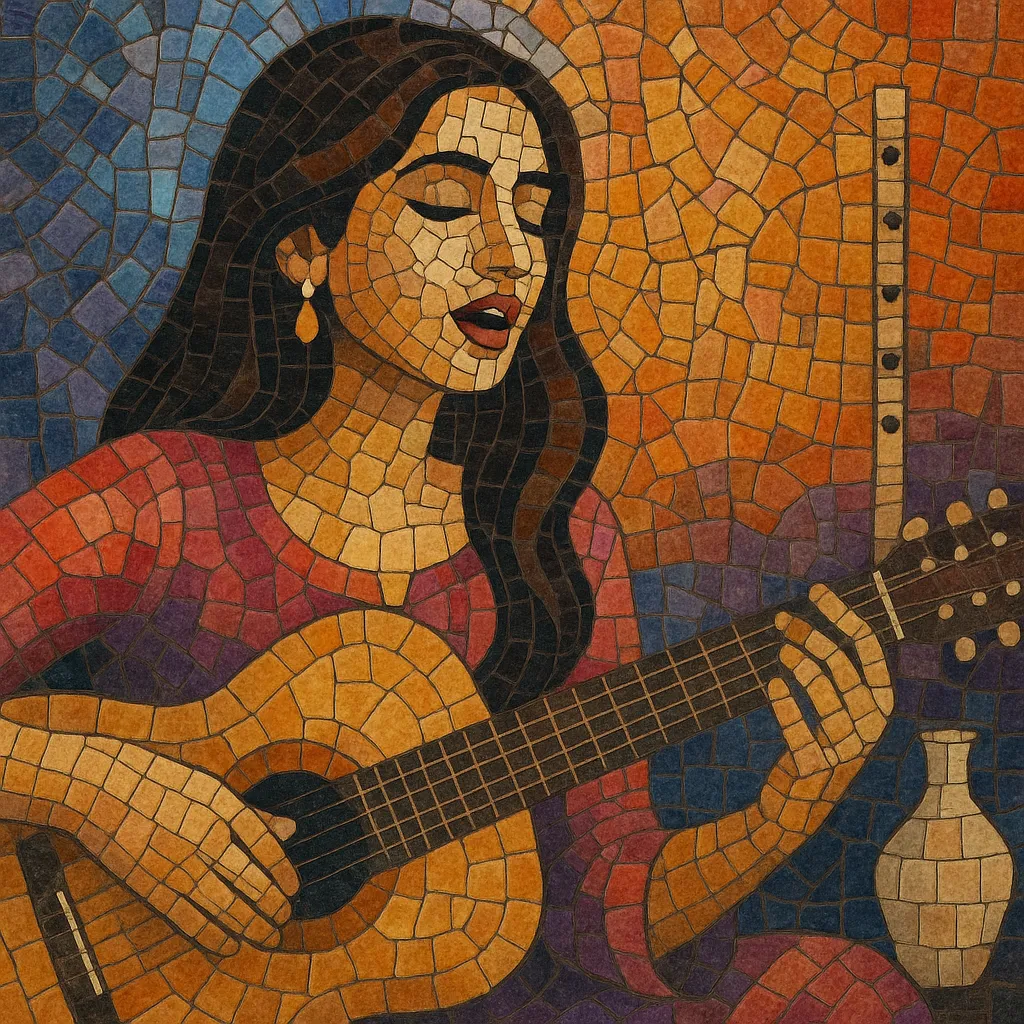Pop ghazal is a light-classical offshoot of the South Asian ghazal tradition that adopts the concise song forms, instrumentation, and production aesthetics of pop music.
It retains the poetic architecture of the ghazal—couplet-based verses (sher), end-rhyme (qaafiya), and refrain (radif)—while delivering memorable hooks, streamlined melodies, and radio-friendly arrangements. Typical accompaniments blend harmonium, acoustic guitar, electric piano, strings, and flute or saxophone with tabla/dholak and soft drum machines, often in Keherwa (4/4) or Dadra (6/8) grooves.
Lyrically, pop ghazal centers on romance, longing, and introspection in Urdu and Hindi (and sometimes Punjabi), while melodic contours borrow accessible phrases from ragas like Yaman, Khamaj, and Bhairavi, smoothed into pop harmonies. The result is an intimate, emotive ballad aesthetic that is both classically rooted and widely approachable.
Ghazal singing evolved within Hindustani light-classical practice, with artists like Mehdi Hassan and Ghulam Ali refining a concert style that balanced raga-informed melody with urbane Urdu poetry. Film (filmi) songs and broadcast media began to popularize the ghazal’s sound beyond classical audiences, setting the stage for a more pop-oriented treatment.
The 1980s saw Jagjit Singh and Chitra Singh crystallize the "pop ghazal" format: shorter song lengths, simplified raga usage, warm electric pianos and strings, and gently pulsing tabla alongside subtle drum machines. Cassette culture enabled mass circulation, and the ghazal moved from the mehfil (salon) into living rooms, radio, and TV.
Artists such as Pankaj Udhas, Talat Aziz, Hariharan, Roop Kumar Rathod, Bhupinder Singh, and Nayyara Noor expanded the repertoire with lush studio productions and concert tours. Pop ghazal aesthetics influenced Hindi pop and Bollywood balladry, where ghazal-style couplets, light-classical ornamentation, and smooth pop arrangements converged.
Streaming revived catalog favorites and enabled new singers to blend pop ghazal with soft rock, adult contemporary, and indie production. Acoustic and lo-fi reinterpretations, as well as live session formats, continue the genre’s emphasis on lyric clarity, intimate vocals, and restrained, elegant accompaniment.


